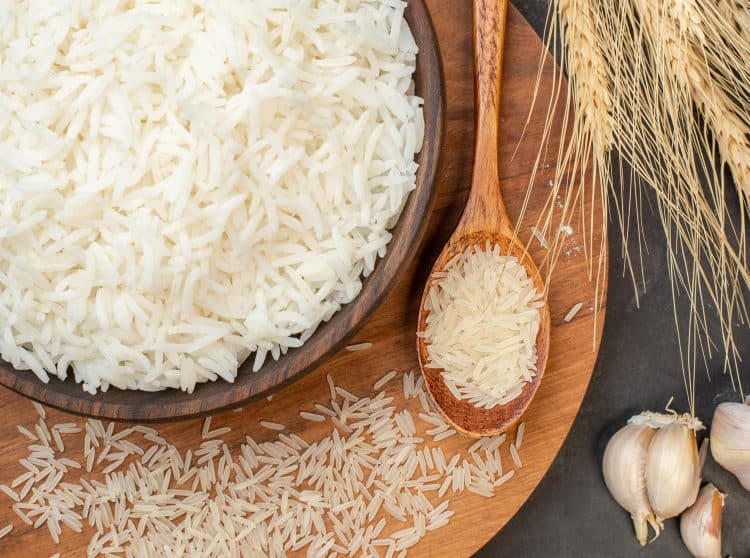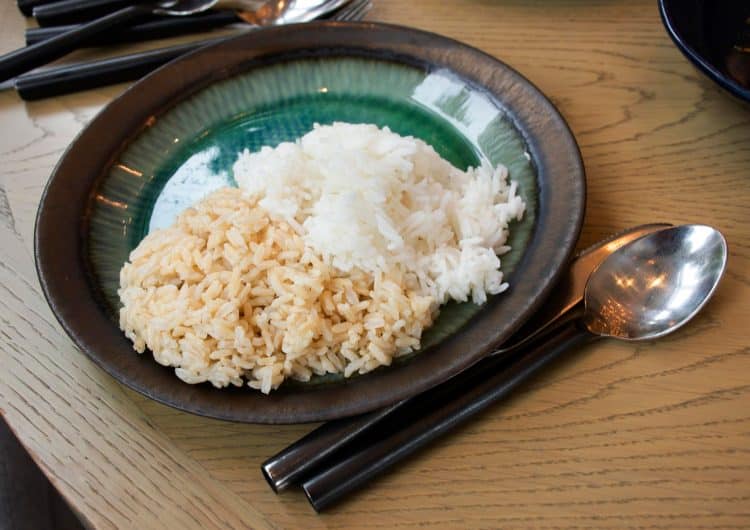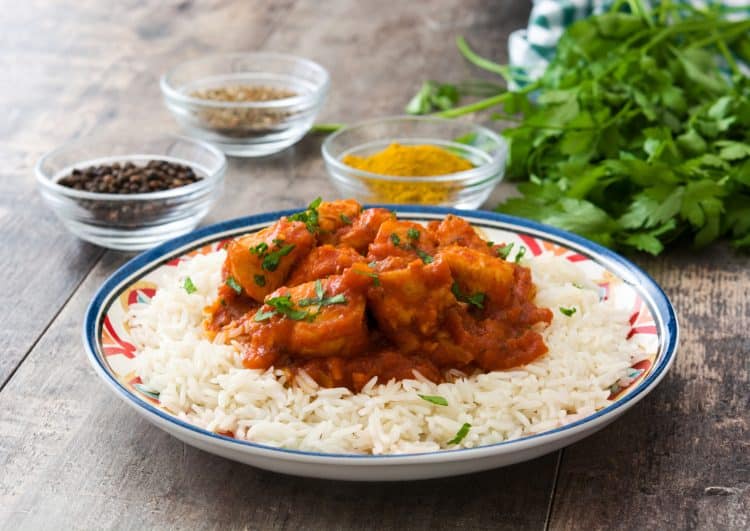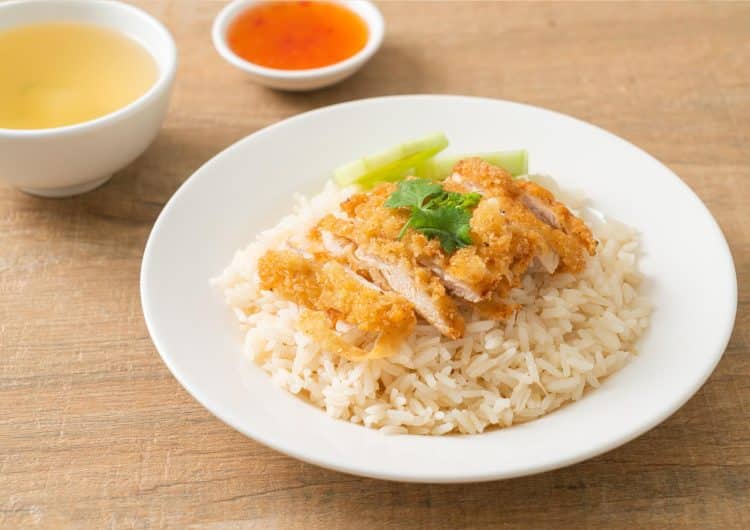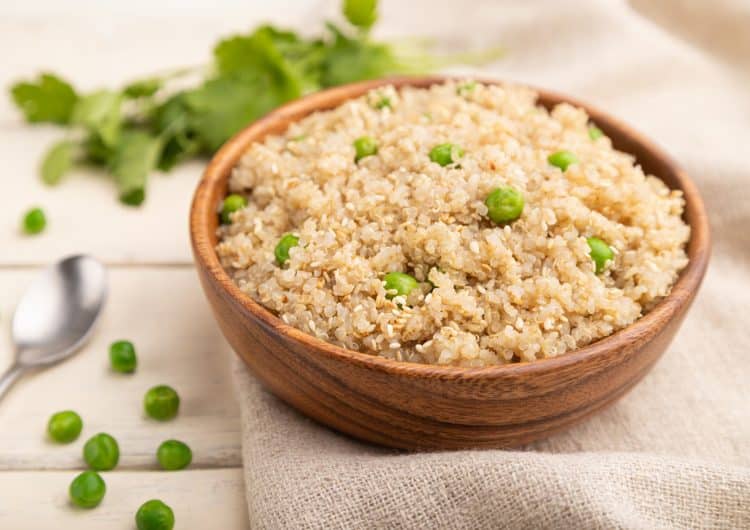Rice — a beautiful nutrient-dense grain that is delicious, easy to cook, and a staple food around the world. Depending on their culture, people have rice in their meals throughout the day.
However, there has been much debate about the effects of white rice on your health. Brown rice has emerged as a solid competitor to white rice over the last couple of decades. The comparison has been especially confusing for folks trying to lose weight.
Besides brown and white, rice comes in various shapes, colors, and sizes, which include arborio rice, basmati rice, black rice, bomba rice, jasmine rice, and parboiled rice. However, for the scope of this article, we will stick to white and brown rice.
Interestingly, all white rice starts as brown rice. Brown rice is put through a milling process to increase its shelf life; however, the process removes the rice’s husk, bran, and germ, wiping out much of its nutrition, including fiber, vitamins, and minerals. The white rice is then artificially fortified with nutrients and polished to make them look more palatable.
The Rice Dilemma
If you are a fitness enthusiast, you probably know that rice is a staple in a bodybuilder’s diet, as it is a convenient carbohydrate source to add size during the bulking phase. Knowing this, dieters trying to lose weight sound the alarm when they see rice in their diet regimen.
Level Up Your Fitness: Join our 💪 strong community in Fitness Volt Newsletter. Get daily inspiration, expert-backed workouts, nutrition tips, the latest in strength sports, and the support you need to reach your goals. Subscribe for free!
Unbeknownst to newbie exercisers, as long as the foods you eat are nutrient-dense and healthy and you stay within your daily calorie intake goal, you don’t need to worry about eating a particular food.
This doesn’t end here. How rice is processed also determines its impact on your weight loss journey. Brown rice is minimally processed, whereas, depending on the brand and type, white rice can undergo significant treatment.
With this said, can white rice be used during your weight loss journey? Let’s find out.
White Rice and Brown Rice Nutrition Comparison
One cannot overlook the white and brown rice comparison during a weight loss regimen. Given below is a comparison of brown and white rice and their macronutrient and calorie content:
| Nutrient/Type | White Rice (100g) | Brown Rice (100g) |
| Calories (Kcal) | 130 | 111 |
| Carbohydrates (g) | 28 | 23 |
| Protein (g) | 2.7 | 2.6 |
| Fats (g) | 0.3 | 0.9 |
Although the difference between brown and white rice’s total calories and macronutrients is insignificant, their overall health impact varies greatly.
A British Medical Journal study found that people who eat high levels of white rice may have an increased risk of developing type 2 diabetes. On the flip side, consuming whole-grain foods such as brown rice lower the risk of stroke, heart disease, and type 2 diabetes. These food sources also help lower your cholesterol levels. [1]
Read also: Black Rice vs. Brown Rice: Is One Superior Overall?
Brown and White Rice Glycemic Index (GI) Comparison
The glycemic index represents the relative rise in the blood glucose level two hours after consuming a carbohydrate-containing food. A food is assigned a value of 1-100 depending on its impact on blood sugar levels. [2]
People with diabetes must monitor their carbohydrate intake and the GI score of the foods they consume to ensure they are on top of their health, as these factors can influence your blood sugar levels.
Short-grain white rice has a high GI (70 and above), whereas brown rice has a low GI (around 50). Remember, the GI level can change depending on the type of rice and the manufacturer.
Folks with diabetes should favor brown rice over white rice to keep their condition under check. Remember, whole grains such as brown rice take longer to cook than white rice. Plus, overcooking them can hamper their GI score.
Since white rice is a high GI good, it rapidly dissolves into your bloodstream. White rice consumption leads to a quick increase in blood sugar levels. It can be a point of concern during a weight loss regimen, as it can result in increased hunger and potential overeating. Plus, studies show that diets high in refined grains are linked to more abdominal fat. [3]
Benefits of White Rice for Weight Loss
The advantages of including white rice in your weight loss diet include the following:
Satiety
White rice is rich in carbohydrates. A 100 grams serving of white rice contains 28 grams of carbohydrates, compared to 23 grams of brown rice. White rice can contribute to the feeling of fullness, especially when coupled with a balanced diet that contains a healthy mix of high-protein foods and healthy fats. Feeling full keeps you from snacking on junk food throughout the day.
Versatility
White rice is an incredibly versatile food source. You could have it at any point throughout the day. Furthermore, it goes well with several dishes as a side. Depending on your daily calorie goals, you could easily alter your white rice portion size.
Since cooked rice lasts about four days in the fridge, most people prefer cooking it in bulk, making it incredibly convenient. This convenience also makes your meal prep easier and helps you stick to your diet.
Quick Source of Energy
Since white rice is a high-GI food, they digest quickly and easily in your stomach. The fast absorbability of rice makes it a perfect food for your pre and post-workout meals. Consuming rice before a training session ensures you have enough energy to last a high-intensity training session.
Having white rice after a workout help replenish your glycogen stores and kickstart your recovery. You must ensure you eat your pre-workout meal with rice at least a couple of hours before your training session to give it enough time to digest and avoid nausea or vomiting. On the other hand, you can have a post-workout meal containing rice half an hour after a workout or as soon as you are ready to eat real food. However, you could gulp down a protein shake right after your workout to begin muscle protein synthesis and rebuilding muscle.
Reasons To Choose White Rice Over Brown Rice For Weight Loss
Until now, we have discussed several benefits of brown rice, which is usually the preferred type of rice for folks trying to lose weight. We must, however, also talk about some of its drawbacks for a fair comparison. Here are a few reasons why some people might prefer white rice over brown rice for weight loss:
Brown Rice Contains Antinutrients
Although brown rice has more fiber, antioxidants, vitamins, and minerals than white rice, it also contains antinutrients. Antinutrients are plant compounds that hinder your body’s ability to absorb certain nutrients. It means brown rice might have more of everything, but your body can’t absorb it.
Phytic acid, or phytate, is the antinutrient in brown rice that hinders your body’s ability to absorb iron and zinc from food [4][5]. Eating brown rice in all meals daily can lead to mineral deficiencies over the long term.
Level Up Your Fitness: Join our 💪 strong community in Fitness Volt Newsletter. Get daily inspiration, expert-backed workouts, nutrition tips, the latest in strength sports, and the support you need to reach your goals. Subscribe for free!
Since white rice has no bran, it has less than half of the phytic acid in brown rice. Individuals dealing with iron and zinc deficiencies should switch to white rice for weight loss.
Brown Rice Contains Arsenic
Arsenic, a naturally occurring substance, is found in air, water, and soil and is known to cause cancer. Brown rice generally has a higher content of the toxic heavy metal than white rice. [6]
Arsenic is the most significant chemical contaminant in drinking water globally. Since rice is cultivated in water, it gains a high amount of arsenic. Besides cancer, prolonged consumption of arsenic-laden foods can increase your risk of contracting type 2 diabetes and hypertension. [7]
White rice usually has lower amounts of arsenic than brown rice, as the bran and the germ are removed to make white rice.
Although bran removal results in the reduction of some nutrients in white rice, it also significantly reduces the phytic and arsenic content of the grain, making it a suitable food source for people dealing with certain health conditions.
Tips To Incorporate White Rice Into Your Weight Loss Journey
Although white rice is a high-carbohydrate food that provides energy for the body, the gluten-free food source gets tough competition from brown rice, which has more fiber, antioxidant, vitamin, and mineral content than its processed counterpart.
With that said, you can still eat white rice for weight loss. Make the following adjustments in your diet to accommodate white rice in your shredding regimen:
Include Fiber-Rich Vegetables, Lean Proteins, and Healthy Fats
Since white rice is a processed grain, it lacks fiber, minerals, vitamins, and antioxidants. You must include a healthy amount of vegetables in your diet to make up for these micronutrients. Nutrient-dense vegetables, lean proteins, and healthy fats will ensure you don’t run into nutrient deficiencies associated with a diet heavily reliant on white rice.
Pairing white rice with vegetables, protein, and healthy fats will make your meals more delicious by adding variety to your diet plan. It will also slow your metabolism, helping you stay satiated for longer and promoting overall health and weight management.
Control Portion Sizes
White rice is a calorie-dense food source. In the initial phase of your weight loss journey, you must carefully weigh your food to ensure you are not going over your daily carbohydrate intake goals, as it can ruin your progress.
Using smaller plates, bowls, and spoons can help curb the risk of overeating. Plus, eating balanced meals with a balance of carbs, proteins, and fats can fill you up quickly and keep you satiated for longer.
Mindful Eating To Maintain a Calorie Deficit
A caloric deficit for weight loss. To be in a calorie deficit, you must expend more calories daily than you consume. You could achieve a calorie deficit by eating less than usual, exercising more, or a combination of the two.
Overshooting your daily calorie goal is incredibly easy while eating carb-rich white rice. You must carefully plan your meals to ensure you don’t consume excess calories. Weigh your physical activity levels and metabolic rate while determining an ideal calorie deficit for weight loss.
Balance Your Carbohydrate Sources
Since white rice is a processed carbohydrate source with most of its fiber, vitamins, minerals, and macronutrients removed, you must add other high-quality sources of carbs to your diet to compensate for the nutrient deficiencies.
Quinoa, oats, buckwheat, sweet potato, and of course, brown rice are some nutrient-dense carbohydrate sources that should be a staple in your meals. Further, you should limit your white rice intake to one cup daily to limit your blood sugar level spikes and ensure a balanced macro and micronutrient intake.
Adding multiple carbohydrate sources to your diet will make your diet regimen more interesting by adding variety. Also, there is no harm in using brown and white rice in your diet regimen together. Both types of grains have a distinctive taste, which can help make your diet more appealing.
Avoid Additions
Although we have already established that all rice is not created equal, we must take it a step further; all white rice is not the same. You must avoid white rice dishes with additions that significantly increase your caloric intake. For example, sushi, fried rice, paella, and risotto are a no-go on a weight loss program.
Furthermore, you must also avoid instant rice as they are fully cooked and then dehydrated, which leads to further nutrient degradation. Consider purchasing rice in bulk and cooking enough in a single go to last you 4-5 days.
Frequently Asked Questions
How much rice should you eat during your weight loss journey?
More than half of your daily carbohydrate comes from whole-grain foods, such as oats, quinoa, whole-grain pasta, and bread.
You should limit your white rice intake to one cup of cooked rice daily to reduce your risk of chronic health issues. Plus, you must opt for ‘enriched’ white rice as some nutrients are added back to this type of rice, making it a better fit for your weight loss journey. Also, choose long-grain white rice variants such as basmati and jasmine over short-grain types like arborio rice, as they are less starchy.
Is brown rice best for weight loss?
Brown rice contains more fiber, magnesium, selenium, folate, and manganese than white rice, which makes it a better grain for weight loss than white rice. Nonetheless, you could also use white rice to achieve your weight loss goal, provided you stick to your calorie deficit and eat a balanced diet to meet your macro and micronutrient objectives.
Can you have white rice before a workout?
Since white rice is a processed carbohydrate with a high GI value, it metabolizes into glucose more quickly. You can have a suitable amount of white rice 2-3 hours before a training session to ensure you have enough energy to take you through an intense workout.
Wrapping Up
Rice comes in different forms. The unprocessed forms are usually brown, beige, or even black in color. On the other hand, processed rice is white. Although white rice has some drawbacks compared to its bran-rich counterpart, such as its high glycemic index, it can still be included in a healthy weight-loss diet when consumed in moderation and paired with nutrient-dense foods like vegetables, lentils, and healthy fats.
Consume white rice before a training session to ensure you have enough energy stores to last a workout. Conversely, having white rice post-workout can ignite your recovery. Remember, since white rice is a processed grain, you must limit your intake to one cup daily to ensure it doesn’t interfere with your weight loss objective.
Finally, factors, including overall calorie intake, portion sizes, physical activity levels, and individual metabolic, play a crucial role in your weight loss journey, and different people react to brown and white rice differently. You must consult a healthcare professional or registered dietitian for personalized guidance on incorporating white rice into your weight loss program.
References
- LeWine, H. E., Dr (n.d.). Glycemic index for 60+ foods. Harvard Health Publishing. https://www.health.harvard.edu/diseases-and-conditions/glycemic-index-and-glycemic-load-for-100-foods
- Hu EA, Pan A, Malik V, Sun Q. White rice consumption and risk of type 2 diabetes: meta-analysis and systematic review. BMJ. 2012 Mar 15;344:e1454. doi: 10.1136/bmj.e1454. PMID: 22422870; PMCID: PMC3307808.
- McKeown NM, Troy LM, Jacques PF, Hoffmann U, O’Donnell CJ, Fox CS. Whole- and refined-grain intakes are differentially associated with abdominal visceral and subcutaneous adiposity in healthy adults: the Framingham Heart Study. Am J Clin Nutr. 2010 Nov;92(5):1165-71. doi: 10.3945/ajcn.2009.29106. Epub 2010 Sep 29. PMID: 20881074; PMCID: PMC2954448.
- Saleh ASM, Wang P, Wang N, Yang L, Xiao Z. Brown Rice Versus White Rice: Nutritional Quality, Potential Health Benefits, Development of Food Products, and Preservation Technologies. Compr Rev Food Sci Food Saf. 2019 Jul;18(4):1070-1096. doi: 10.1111/1541-4337.12449. Epub 2019 Jun 4. PMID: 33336992.
- Gupta RK, Gangoliya SS, Singh NK. Reduction of phytic acid and enhancement of bioavailable micronutrients in food grains. J Food Sci Technol. 2015 Feb;52(2):676-84. doi: 10.1007/s13197-013-0978-y. Epub 2013 Apr 24. PMID: 25694676; PMCID: PMC4325021.
- National Cancer Institute (n.d.). Arsenic. Cancer.gov. https://www.cancer.gov/about-cancer/causes-prevention/risk/substances/arsenic
- Wei Y, Zhu J, Nguyen A. Rice consumption and urinary concentrations of arsenic in US adults. Int J Environ Health Res. 2014;24(5):459-70. doi: 10.1080/09603123.2013.857393. Epub 2013 Nov 18. PMID: 24236891.

